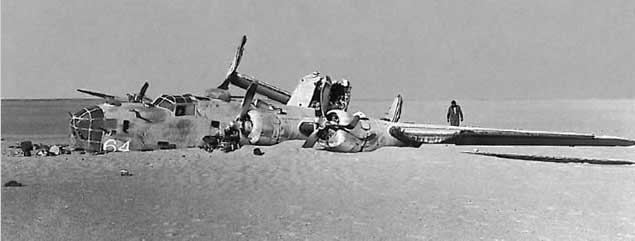 Avoiding the Rocks
Avoiding the Rocks
A couple of weeks ago I talked about being anchored through a storm on our trip in Prince William Sound. I made a printout of the GPS that shows a breadcrumb line showing how the winds blew us around that night. The Bible says hope is our anchor. Our anchors that night were in excellent holding ground, so despite the terrors of the storm, we were safe. In life, our anchor needs to be firmly grounded in Jesus. Since I spoke two weeks ago, additional families right here at Cliffside have encountered storms more terrifying than what we encountered on the water. My prayer is that they will cling to Jesus through it all.
After we survived the storm, we moved south to Drier Bay, recommended as one of the most beautiful places in Prince William Sound. It was great to have the GPS, which told us just were we were in relation to the rocks. The seas were calm and Susan was beginning to really trust the GPS as we threaded our way through obstructions. But all of a sudden the depth sounder indicated something was wrong. The bottom was coming up rapidly from what had been a depth of hundreds of feet. The GPS showed clear water, no obstructions. We were in mid channel between the shore and a charted rock in the middle of the bay, usually the safest place. But in what couldn’t have been more than seconds, we crashed hard into an uncharted rock awash. (Photo is of the rock at low tide.)
Prince William Sound has lots of uncharted rocks. I have no idea how many we’ve barely missed. But we’d never really HIT a rock before. This time, we did it good. We hit hard, at full cruising speed of 6.4 miles per hour. That may not sound like a lot, but when you have 5000 pounds of boat going that speed, there's an impact when it suddenly stops. A barbecue under the gangway broke through the wood. I was thrown into the bulkhead and my elbow hit my ribs so hard they might have cracked.
Fortunately, the boat stayed afloat. We didn’t take on any water. We looked at the keel in clear water and it didn’t look bad. We felt up and down it with a paddle and it didn’t even seem gouged. So we continued our trip. It was a weekend and the launching ramp at Whittier is a zoo on weekends.
Not long before this, I’d been feeling pretty proud that in all the years we’ve been boating, we’d never hit a rock. Pride goes before a fall. The incident did bring to mind, however, how many rocks we’ve narrowly missed. And I do have to admit that once when I was a young I woke up and found my little flat-bottomed boat perched on top of a rock with the water six feet below us. We had no choice but to sit very still and wait for the tide to come in and float us off.
Susan’s growing faith in the GPS, reinforced by its service through that terrible windy night, was shattered. It goes to show you. Instruments are great, but even they don’t always have all the information you need. Before you trust them, you need to be sure they are reliable.
For a pilot flying in clouds, it is critical that he trust his instruments and not make decisions based on what feels right. Even birds get disoriented when flying in clouds. You might have had a disoriented feeling if you’ve ever driven down a windy road in fog. It’s hard to know which way is up. Statistically, a pilot who relies on his feelings rather than his instruments will crash his plane in a matter of minutes.
A classic example of what can happen is the Lady Be Good, a World War II bomber on her first combat mission. She had flown from Benghazi in North Africa on a mission to Naples, Italy. When the Lady Be Good took off for the return trip to Benghazi, it was low on fuel. It never arrived. For 17 years, it was assumed that she ran out of gas over the Mediterranean and crashed into the water.
But eventually, she was found, crashed in the Sahara Desert 442 miles beyond Benghazi. The condition of the plane was good. It just finally just ran out of gas and the crew bailed out. How could a plane low on gas to start with fly 442 miles past its destination? It was a mystery. The instruments were tested and found to be in perfect working order. There was nothing wrong with the plane.
One man’s parachute failed to open. He was probably the luckiest of the group. The others began to walk. In Sahara Desert temperatures of 135 to 140 degrees, they trudged, on and on. Five men’s bodies were found 78 miles from the crash site. Three struggled on. One body was found 26 miles further on and another an incredible 114 miles from the bailout point. One body was never found. We can only imagine how the men suffered, walking that far in the blazing heat and sand with little food or water.
Although no one knows for certain  what happened, it appears that not long after they settled in for the long flight back across the Mediterranean, the instruments started acting strangely. The automatic direction finder indicated that they had passed their base! But that was impossible. They had only just started toward home. The instruments couldn’t be right. They made the decision to do what felt right rather than trust the seemingly malfunctioning instruments.
what happened, it appears that not long after they settled in for the long flight back across the Mediterranean, the instruments started acting strangely. The automatic direction finder indicated that they had passed their base! But that was impossible. They had only just started toward home. The instruments couldn’t be right. They made the decision to do what felt right rather than trust the seemingly malfunctioning instruments.
What happened? It’s now known that they picked up a super-strong tailwind. The instruments were telling them the truth. They chose to follow their feelings and do what made the most sense at the time. That decision cost them their lives after days of what must have been hell in the blazing Sahara sun.
On the instrument panel of every plane, and in every heart and mind, these words from Proverbs should be etched: “There is a way that seems right to a man, but in the end it leads to death.”
I didn’t have all the information I needed when we crashed into the rock. The men on the Lady Be Good didn’t know about the tail wind. Pilots flying in clouds can't sense which way is up. We have to make crucial decisions all the time based on incomplete information. We may get away without guidance, sometimes by sheer luck. When we first bought a boat, I didn’t bother that much with charts. GPS hadn’t even been invented. Sometimes we’d wake up when the tide was low and see huge rocks where you’d least expect them!
So Who can we trust? There is only ONE who knows everything, whose guidance can be trusted in every case. God gave us the Bible as our instruction booklet. It tells us where the charted rocks lie and shows us how to avoid them. It guides us toward our eternal destination like the automatic direction finder in an airplane.
Several years ago, a friend gave me a sweatshirt. It always gets comments when I wear it. It says, “When all else fails, read the directions.” The picture is of a Bible. My advice is, read the directions before all else fails and save yourself a lot of grief. God cared enough about us to give us directions and guidance. We ignore His counsel at our peril.
Go on to read Where Did the Bible Come From?
Source: www.SusanCAnthony.com, ©Susan C. Anthony
